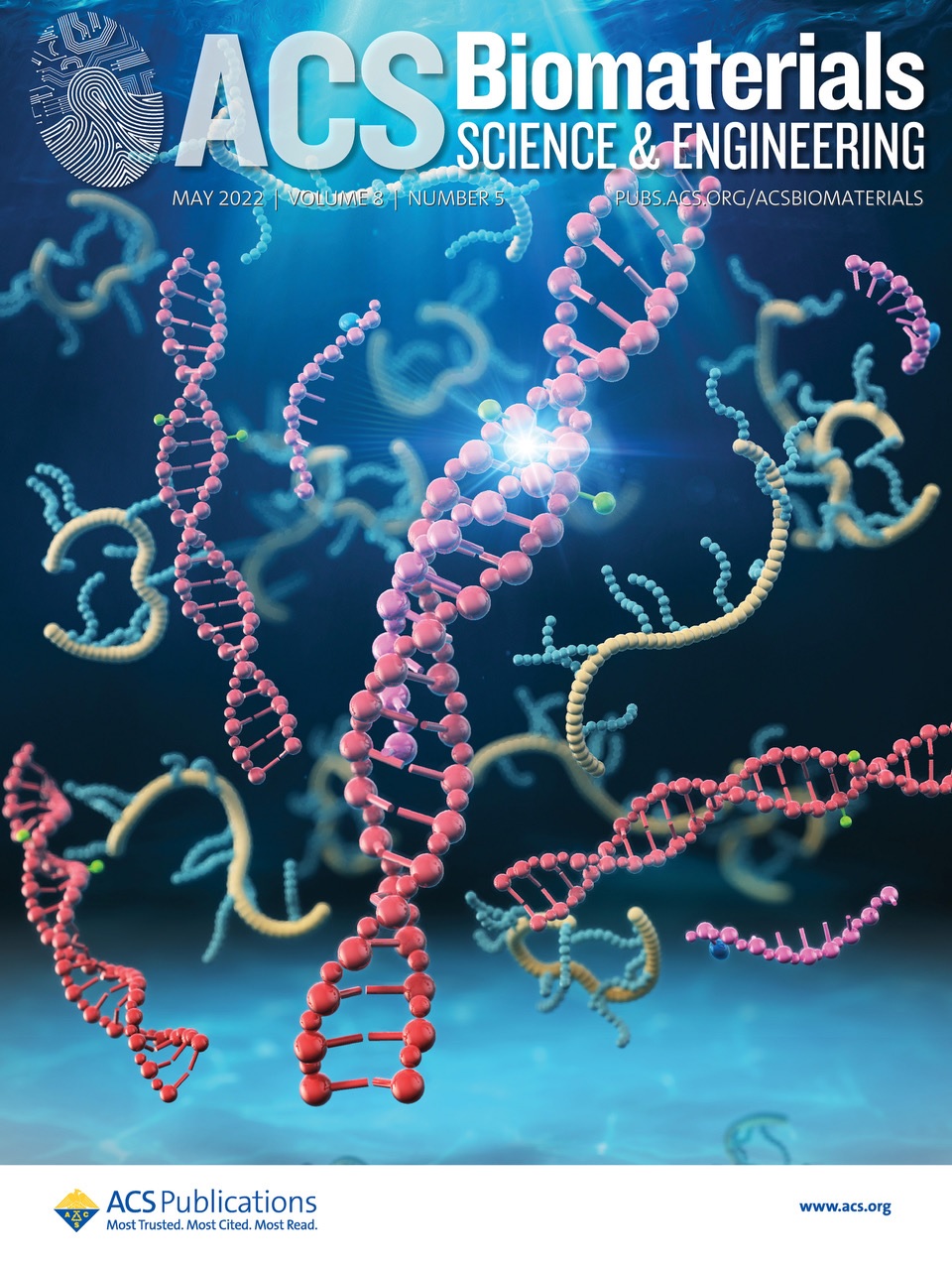The risk of type 1 diabetes in children born after ART: a nordic cohort study from the CoNARTaS group
IF 5.4
2区 医学
Q2 MATERIALS SCIENCE, BIOMATERIALS
引用次数: 0
Abstract
Do children born after ART have a higher risk of developing type 1 diabetes (DM1) than children conceived without ART? The risk of DM1 was similar for children conceived with and without ART, and there were no clear differences in risk according to method of fertility treatment. ART is associated with higher risk of adverse perinatal outcomes, and risk depends on the method of ART. The Developmental Origins of Health and Disease theory proposes that prenatal stress can provoke changes in endocrine processes which impact health later in life. A Nordic register-based cohort study was carried out, including all children born in Denmark (birth years 1994–2014), Finland (1990–2014), and Norway (1984–2015). The study included 76 184 liveborn singletons born after ART and 4 403 419 born without ART. Median follow-up was 8.3 years and 13.7 years in the ART and non-ART group, respectively. The cohort, initiated by the Committee of Nordic Assisted Reproductive Technology and Safety (CoNARTaS), was established by linking national registry data from the medical birth registries and national patient registries available in the Nordic countries. We performed multivariable logistic regression analyses for the birth year intervals 1984–1990, 1991–1995, 1996–2000, 2001–2005, 2006–2010, and 2011–2015, while adjusting for year of birth within each interval, sex of the child, parity, maternal age, maternal diabetes, and maternal smoking during pregnancy as potential confounders. During follow-up, 259 (3.4‰) children born after ART were diagnosed with DM1, while this was the case for 22 209 (5.0‰) born without ART, corresponding to an adjusted odds ratio of 0.98 (95% CI 0.86 to 1.11). Within the different birth year intervals, no significant difference in risk of DM1 between the two groups was found, except for the youngest cohort of children born 2011–2015 where ART was associated with a higher risk of DM1. We found no significant differences in risk of DM1 when comparing children born after IVF versus ICSI or fresh versus frozen embryo transfer, but with only few cases in each group. The main limitation of the study is the relatively short follow-up time. The incidence rate of DM1 peaks during ages 10–14 years, hence a longer follow-up would benefit all analyses and in particular the subgroup analyses. Overall, our findings are reassuring especially considering the concomitantly increasing number of children born from ART and the increasing incidence of DM1 globally. This Nordic registry study has been supported by the Nordic Trial Alliance/NORDFORSK and Rigshospitalets Research Foundation. The funding sources had no role in study design; in the collection, analysis, and interpretation of data; in the writing of the report; and in the decision to submit the article for publication. None of the authors has any conflicts of interest to declare regarding this study. ISRCTN11780826抗逆转录病毒疗法后出生的儿童患 1 型糖尿病的风险:CoNARTaS 小组的一项北欧队列研究
接受抗逆转录病毒疗法(ART)后出生的儿童患 1 型糖尿病(DM1)的风险是否高于未接受抗逆转录病毒疗法的儿童? 接受抗逆转录病毒疗法和未接受抗逆转录病毒疗法的受孕儿童罹患 DM1 的风险相似,而且不同的生育治疗方法导致的风险也无明显差异。 抗逆转录病毒疗法与围产期不良结局的较高风险相关,而风险取决于抗逆转录病毒疗法的方法。健康与疾病的发展起源理论认为,产前压力可引起内分泌过程的变化,从而影响日后的健康。 我们开展了一项基于北欧登记的队列研究,包括丹麦(1994-2014 年出生年份)、芬兰(1990-2014 年出生年份)和挪威(1984-2015 年出生年份)出生的所有儿童。研究包括 76 184 名接受抗逆转录病毒疗法后出生的单胎活产婴儿和 4 403 419 名未接受抗逆转录病毒疗法的单胎活产婴儿。抗逆转录病毒疗法组和非抗逆转录病毒疗法组的中位随访时间分别为 8.3 年和 13.7 年。 该队列由北欧辅助生殖技术和安全委员会(CoNARTaS)发起,通过连接北欧国家现有的出生医学登记处和国家患者登记处的国家登记数据而建立。我们对 1984-1990 年、1991-1995 年、1996-2000 年、2001-2005 年、2006-2010 年和 2011-2015 年的出生年份间隔进行了多变量逻辑回归分析,同时调整了每个间隔内的出生年份、婴儿性别、奇偶性、产妇年龄、产妇糖尿病和产妇孕期吸烟等潜在混杂因素。 在随访期间,259 名(3.4‰)抗逆转录病毒疗法后出生的儿童被诊断为 DM1,而 22 209 名(5.0‰)非抗逆转录病毒疗法后出生的儿童被诊断为 DM1,调整后的几率比为 0.98(95% CI 0.86 至 1.11)。在不同的出生年份区间内,除 2011-2015 年出生的最年轻组群中抗病毒疗法与 DM1 风险较高相关外,两组间的 DM1 风险无显著差异。在比较试管婴儿与卵胞浆内单精子显微注射(ICSI)或新鲜胚胎移植与冷冻胚胎移植后出生的儿童时,我们发现DM1的风险没有明显差异,但每组都只有少数病例。 这项研究的主要局限性在于随访时间相对较短。DM1 的发病率在 10-14 岁期间达到高峰,因此更长时间的随访将有利于所有分析,尤其是亚组分析。 总体而言,我们的研究结果令人欣慰,特别是考虑到抗逆转录病毒疗法所生儿童的数量在不断增加,以及全球 DM1 发病率的不断上升。 这项北欧登记研究得到了北欧试验联盟/NORDFORSK 和 Rigshospitalets 研究基金会的支持。资金来源在研究设计、数据收集、分析和解释、报告撰写以及决定是否将文章提交发表等方面均未发挥任何作用。所有作者均未就本研究申报任何利益冲突。 ISRCTN11780826
本文章由计算机程序翻译,如有差异,请以英文原文为准。
求助全文
约1分钟内获得全文
求助全文
来源期刊

ACS Biomaterials Science & Engineering
Materials Science-Biomaterials
CiteScore
10.30
自引率
3.40%
发文量
413
期刊介绍:
ACS Biomaterials Science & Engineering is the leading journal in the field of biomaterials, serving as an international forum for publishing cutting-edge research and innovative ideas on a broad range of topics:
Applications and Health – implantable tissues and devices, prosthesis, health risks, toxicology
Bio-interactions and Bio-compatibility – material-biology interactions, chemical/morphological/structural communication, mechanobiology, signaling and biological responses, immuno-engineering, calcification, coatings, corrosion and degradation of biomaterials and devices, biophysical regulation of cell functions
Characterization, Synthesis, and Modification – new biomaterials, bioinspired and biomimetic approaches to biomaterials, exploiting structural hierarchy and architectural control, combinatorial strategies for biomaterials discovery, genetic biomaterials design, synthetic biology, new composite systems, bionics, polymer synthesis
Controlled Release and Delivery Systems – biomaterial-based drug and gene delivery, bio-responsive delivery of regulatory molecules, pharmaceutical engineering
Healthcare Advances – clinical translation, regulatory issues, patient safety, emerging trends
Imaging and Diagnostics – imaging agents and probes, theranostics, biosensors, monitoring
Manufacturing and Technology – 3D printing, inks, organ-on-a-chip, bioreactor/perfusion systems, microdevices, BioMEMS, optics and electronics interfaces with biomaterials, systems integration
Modeling and Informatics Tools – scaling methods to guide biomaterial design, predictive algorithms for structure-function, biomechanics, integrating bioinformatics with biomaterials discovery, metabolomics in the context of biomaterials
Tissue Engineering and Regenerative Medicine – basic and applied studies, cell therapies, scaffolds, vascularization, bioartificial organs, transplantation and functionality, cellular agriculture
 求助内容:
求助内容: 应助结果提醒方式:
应助结果提醒方式:


